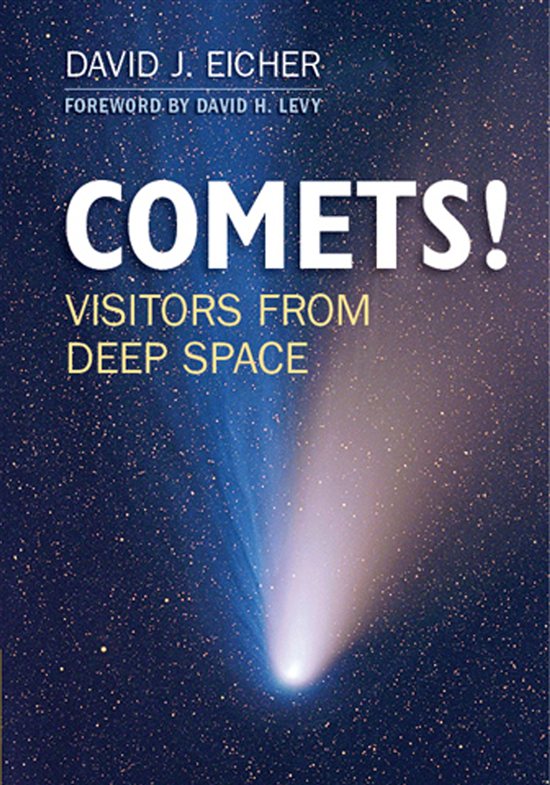 My new book, COMETS! Visitors from Deep Space, is just published by Cambridge University Press. You can find it at bookstores, or for more info, see this website.
My new book, COMETS! Visitors from Deep Space, is just published by Cambridge University Press. You can find it at bookstores, or for more info, see this website.
Here’s an excerpt that takes you back to a Great Comet of my youth . . .
Enjoy!
When I was young, I fancied becoming a doctor. The allure of medicine, of diagnosing diseases, of understanding the complexity of the human body — it all seemed endlessly fascinating. It offered a universe of ideas and challenges you could lose yourself in that could help person after person through challenges with illness and health. And then, in the midst of that momentum, when I was 14, in my little southwestern Ohio town, I went to a so-called star party.
Someone had set up a Criterion Dynascope 6-inch reflector, one of those telescopes with a long white tube and with the eyepiece fixed high at the upper end, and I peered in to take my first telescopic look at Saturn. That moment changed my life. Seeing the radiant light from Saturn’s bright orange globe, encircled by golden orange rings, incised by a black gap, made me gasp. The pinpoint of a little saturnian moon hovered nearby. Everything just stopped. I was transfixed by the vision of another world — live, in real time — right before my eyes.
It was early 1976, and the crisp winter air was not yet ready to surrender to spring. Infected with this new awareness of the universe around me, I needed to find out everything I could — to take many more looks through telescopes, or in my case, my dad’s pair of binoculars. Just as I was scrambling my first set of primitive equipment together, a friend called and gave me some promising news. “If you’re getting into astronomy, you’re in luck,” he blurted out. “There’s a bright comet that’s gonna be amazing soon, but you’ll have to get up early in the morning to see it!”
Along came another magic moment. Wandering out into the backyard, stepping across into the adjoining cornfield, and gazing up at the stars of Aquarius, I was thunderstruck at the sight. The icy cold air, dead silence of the early morning, and strange adventure of being out alone in a field before dawn added to the eerie, almost mystical sight that hovered over the planet. There, starkly visible in plain sight, like a shimmering sword hanging over Earth, was the bright glow of a comet with a fuzzy, star-like head and a long tail skirting upward and to the left. This was my first look at Comet West, the first look of many.
To someone who lived my whole life to that point on a “2-D planet,” like most of us beset by daily life, this was a dose of sudden magic. Who knew that you could simply walk out and so easily see such a range of incredible sights in the universe, far away from Earth? And not only was Comet West a spectacular sight, bright enough to be stunning in its odd and unexpected appearance, but it showed me in just a day or two that objects in the heavens changed rapidly. The comet changed appearance when viewed through a telescope, and changed position in the sky, from night to night. I was catching on that there’s a whole lot more to this universe than I might have believed a few days earlier.
Each day the comet rose in the early morning sky in the east, the tail peeking above the horizon first and then finally the head clearing the trees and moving up to complete the stunning portrait. Each morning it was fully visible in a dark sky before dawn finally moved in and broke up the show. Here was a daily adventure, one that revealed the universe around us as a dynamic and unpredictable place, and that we inhabit just one little tiny spot in it, indeed even a small corner of our solar system. That late winter and early spring, Comet West became one of the Great Comets of the 20th century, peaking at magnitude –3, making it brighter than the planet Jupiter.